5 Dening class BList A bounded list BList is a List that pla
5
Dening class BList
A bounded list, BList, is a List that places a restriction on the maximum allowable number of elements that can be held in the list.
• The invariant adds a restriction that the size must never exceed the specied capacity.
• The constructor methods add a precondition that the capacity cannot be zero.
• The two operations that implement addition now include a precondition that the collection must not have reached its maximum capacity.
6
Your assignment
Implement classes Node, List, BList, and Demo. Class BList retains the interface of its superclass, but places restrictions to its add(..) methods in order to accommodate a bounded collection. Class Demo instantiates a BList and demonstrates its usage by simulating a scenario that deploys all operations.
Dene and implement any and all appropriate contracts using the adbc tool.
Solution
Hi, Please find my implementation of first two questions.
Please repost other questions.
Please let me know in case of any issue.
########### Node.java ##############
public class Node<E> {
// instance variables
private E data;
private Node<E> next;
// constructor
public Node(E data){
this.data = data;
next = null;
}
// setters and getters
public E getData() {
return data;
}
public Node<E> getNext() {
return next;
}
public void setData(E data) {
this.data = data;
}
public void setNext(Node<E> next) {
this.next = next;
}
}
############# List.java ################
public class List<E> {
private Node<E> head;
private int listCount;
public List() {
head = null;
listCount = 0;
}
public List(Node<E> n) {
if(n == null){
head = null;
return;
}
head = new Node<E>(n.getData());
listCount = 1;
}
public boolean add(Node<E> n)
{
if(n == null)
return false;
Node<E> temp = new Node<E>(n.getData());
Node<E> current = head;
while (current.getNext() != null) {
current = current.getNext();
}
current.setNext(temp);
listCount++;
return true;
}
public void add(int index, Node<E> n )
{
// base case
if(n == null || (index < 0 || index > listCount))
return;
Node<E> temp = new Node<E>(n.getData());
Node<E> current = head;
for (int i = 1; i < index && current.getNext() != null; i++) {
current = current.getNext();
}
temp.setNext(current.getNext());
current.setNext(temp);
listCount++;
}
public Node<E> get(int index){
if (index < 0 || index > listCount)
return null;
Node<E> current = head.getNext();
for (int i = 1; i < index; i++) {
current = current.getNext();
}
return current;
}
public void remove(int index){
if (index < 1 || index > size())
return;
Node<E> current = head;
for (int i = 1; i < index; i++) {
current = current.getNext();
}
current.setNext(current.getNext().getNext());
listCount--;
}
public int size()
{
return listCount;
}
public void clear(){
head = null;
listCount = 0;
}
public boolean contains(Node<E> n){
// Base case
if(n == null || head == null)
return false;
Node<E> current = head;
while (current != null) {
if(current.getData() == n.getData())
return true;
current = current.getNext();
}
return false;
}
public int indexOf(Node<E> n){
if(n == null)
return -1;
Node<E> current = head;
int i = 0;
while(current != null) {
if (current.getData() == n.getData())
break;
i++;
current = current.getNext();
}
if(current == null)
return -1;
return i;
}
public boolean isEmpty(){
return head == null;
}
public void set(int index, E element )
{
// base case
if(element == null || (index < 0 || index > listCount))
return;
Node<E> temp = new Node<E>(element);
Node<E> current = head;
for (int i = 1; i < index && current.getNext() != null; i++)
current = current.getNext();
temp.setNext(current.getNext());
current.setNext(temp);
listCount++;
}
}
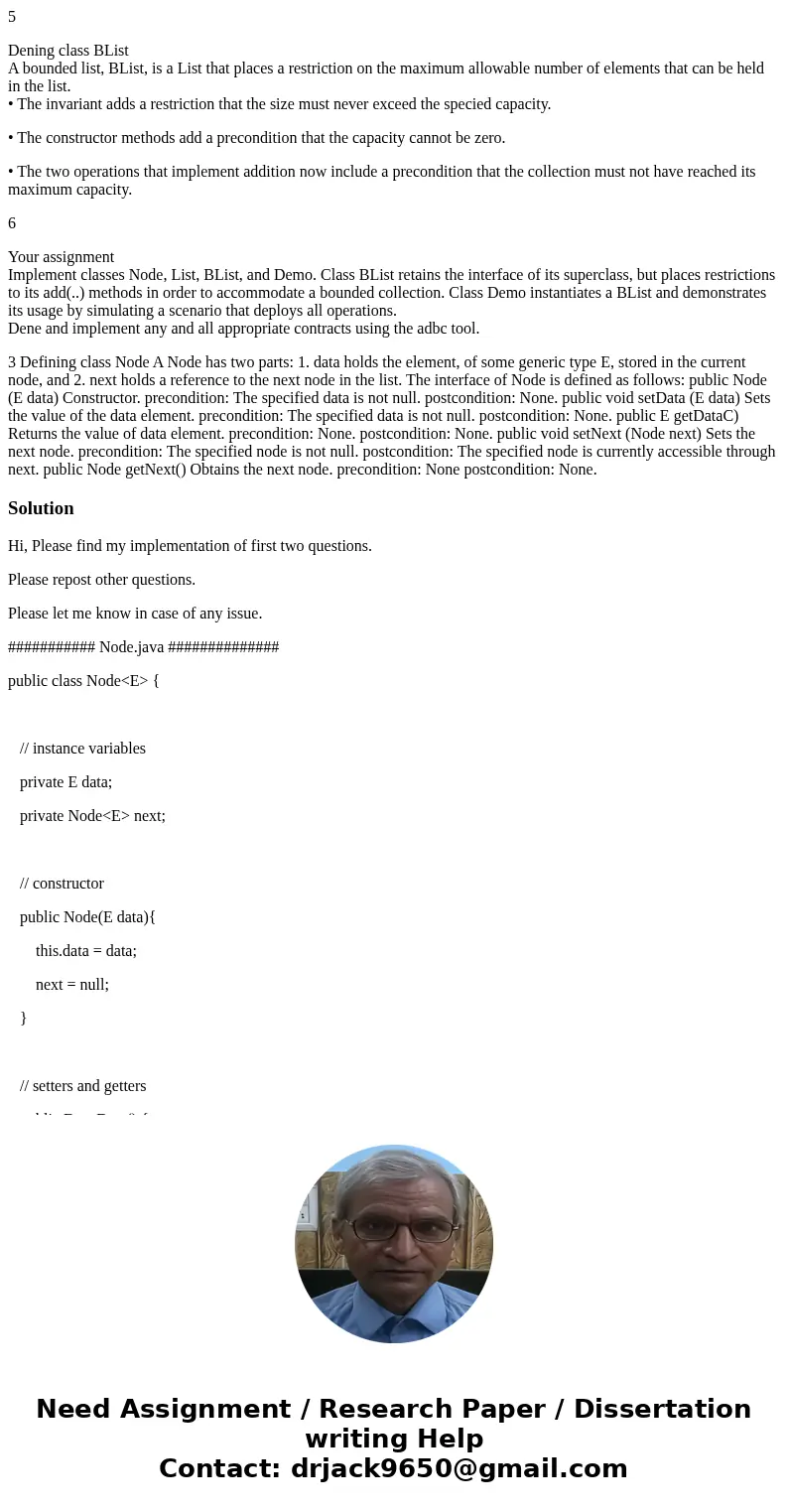
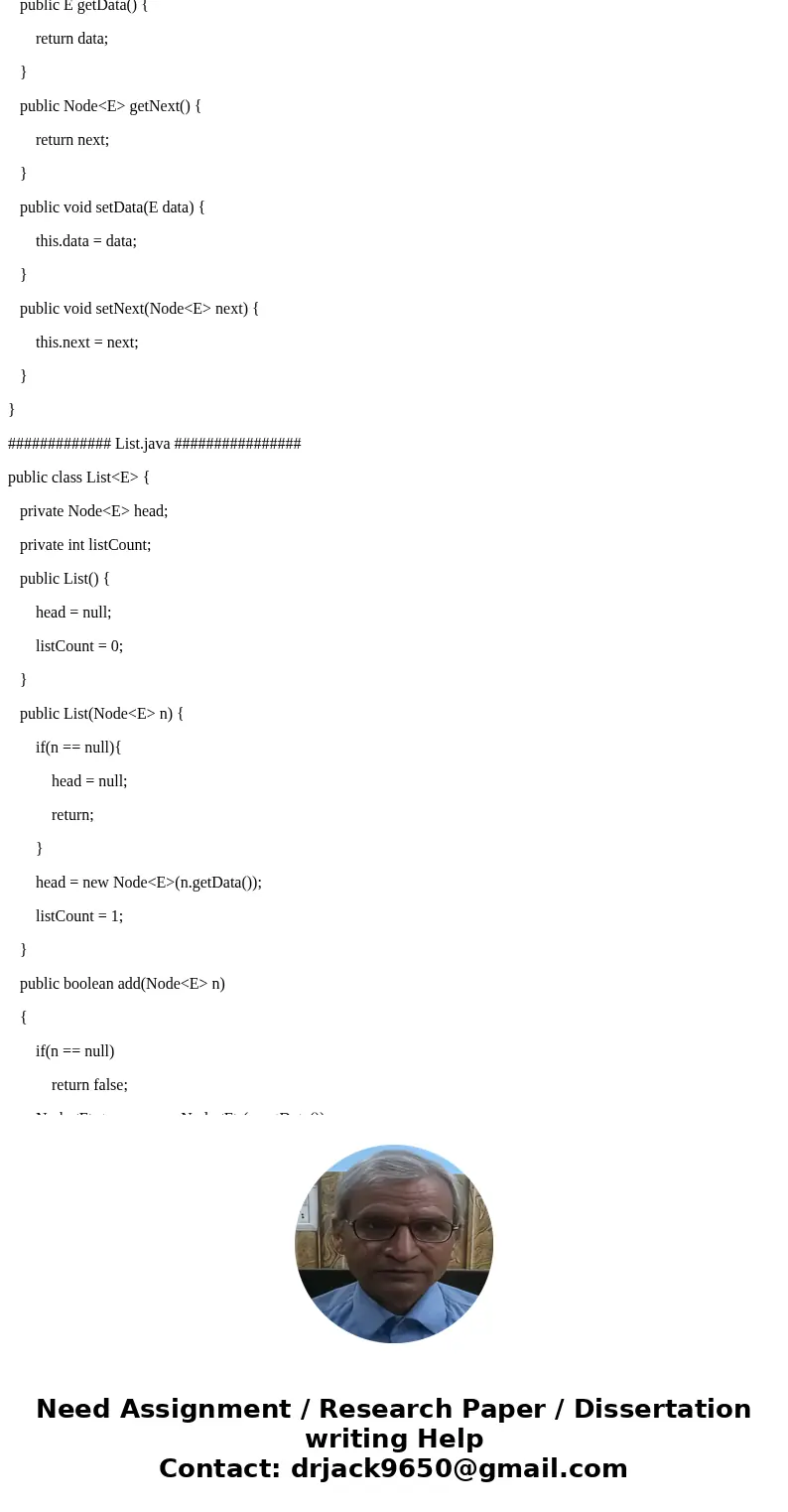
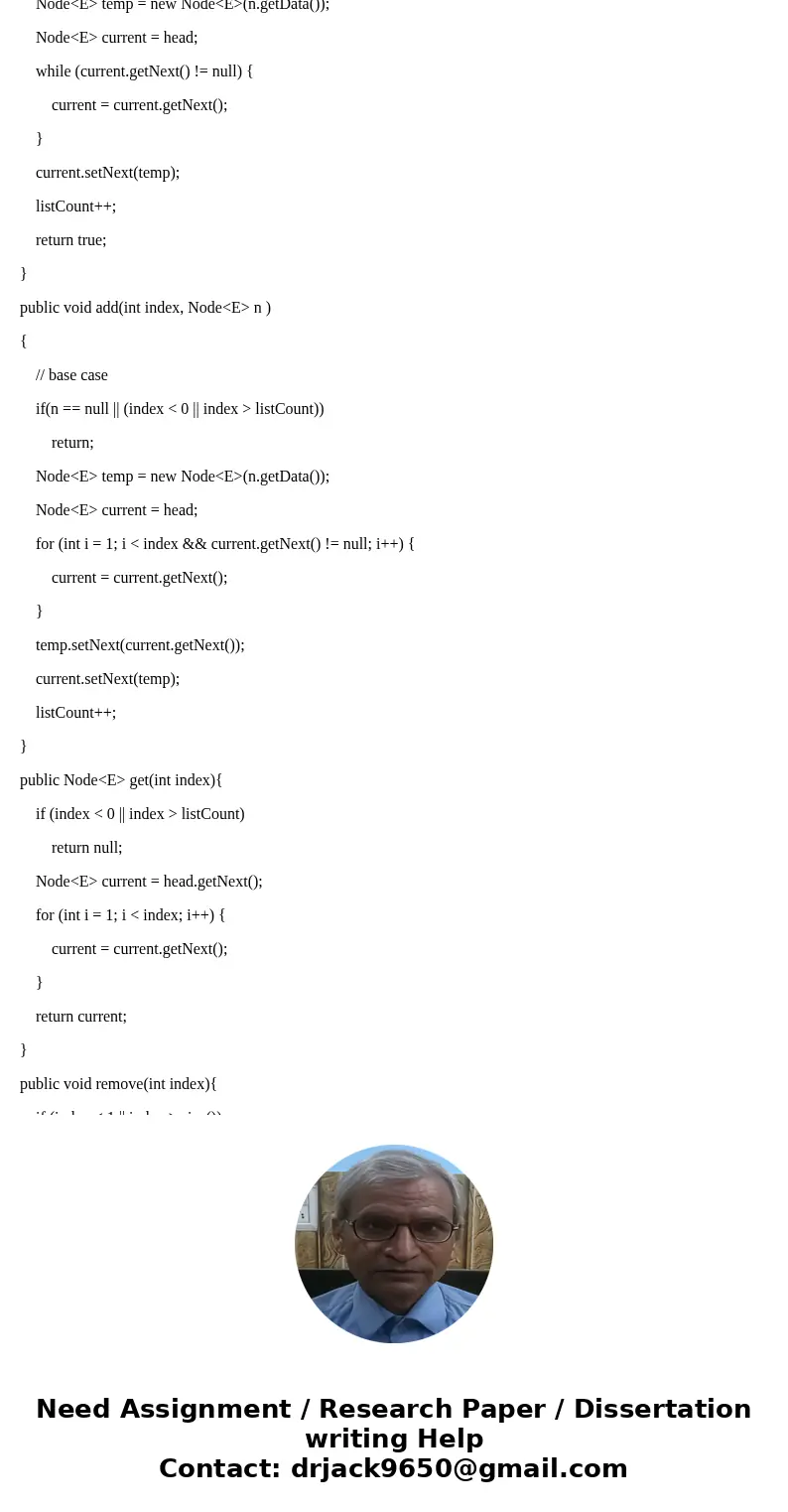
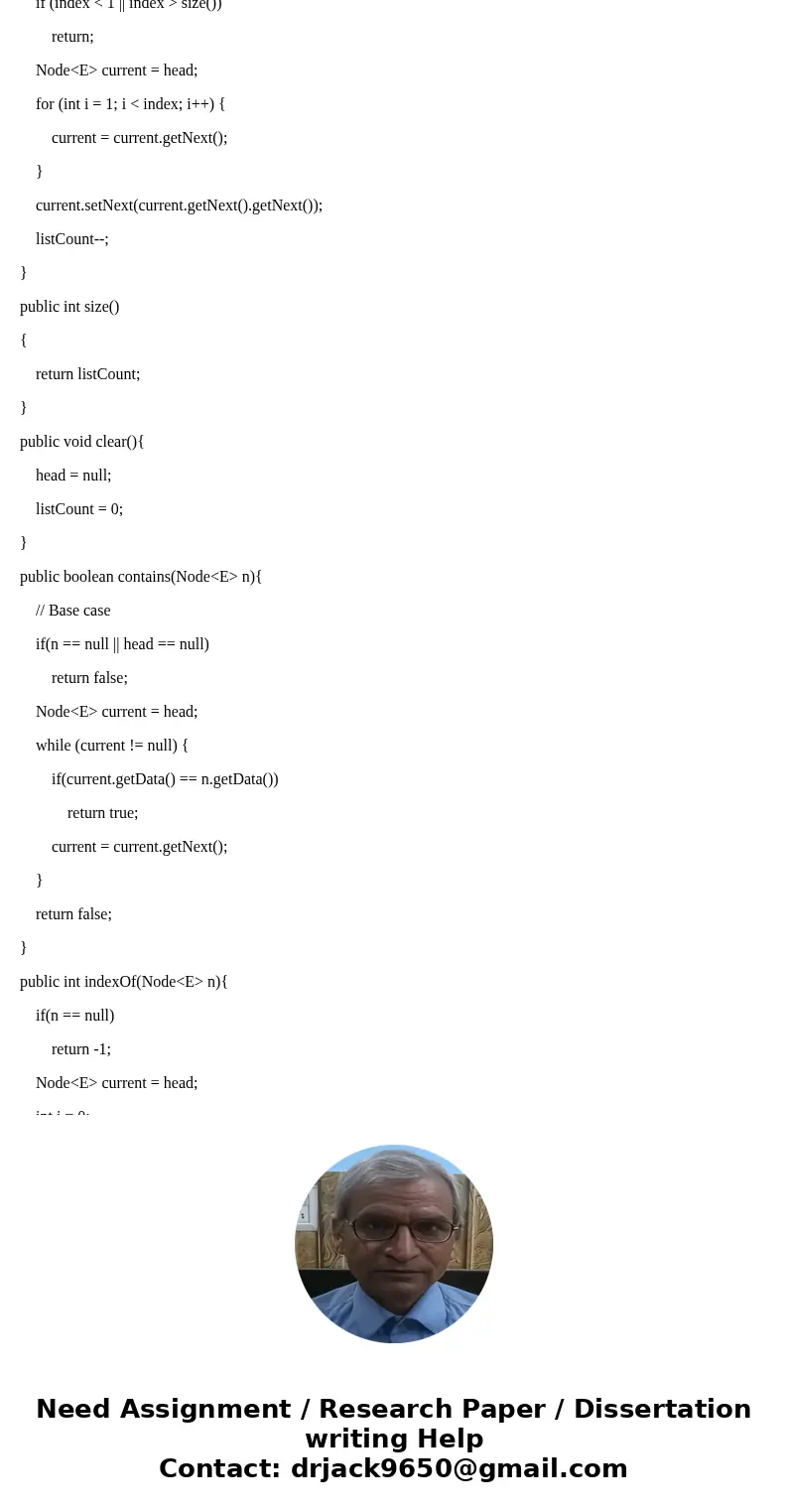
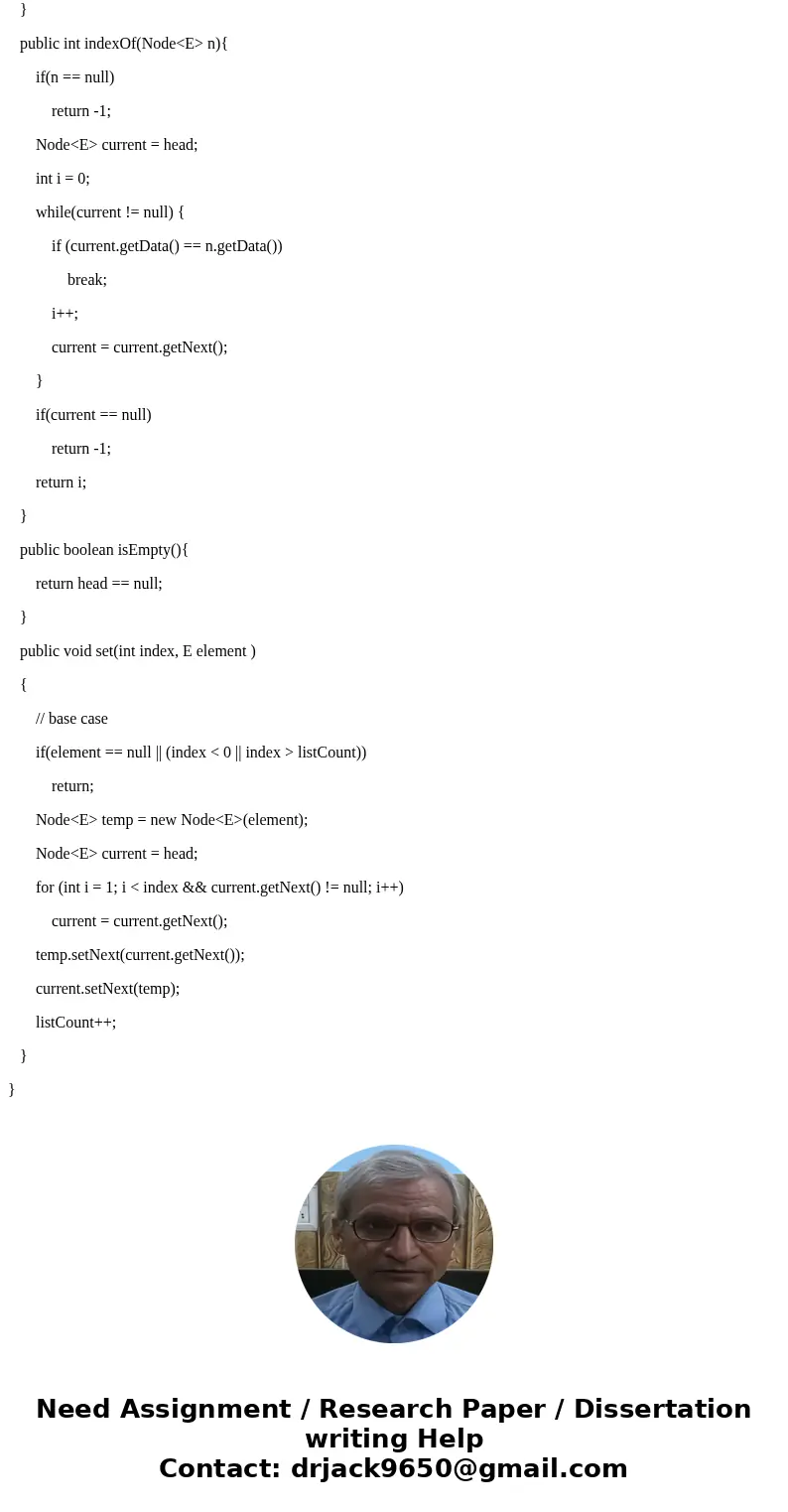
 Homework Sourse
Homework Sourse